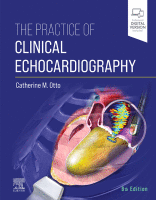Physical Address
304 North Cardinal St.
Dorchester Center, MA 02124

General Principles Breathlessness is usually the first presenting symptom of pulmonary hypertension (PHT). Because breathlessness has a wide variety of causes, PHT is often not suspected initially by the patient or the physician. However, identification of PHT has important implications…

Regular athletic training causes changes in cardiac structure and function, commonly referred to as athlete’s heart . The character and magnitude of these changes vary with the type and volume of training but may result in parameters of cardiac structure…

Hypertensive, nutritional, and metabolic disorders have diverse presentations and adversely affect multiple organ systems. Heart disease is common, but it is often subclinical and detected only when noninvasive studies such as echocardiography are performed. Cardiovascular disease is a major source…

Forms of Connective Tissue Disorders Connective tissue disorders can affect multiple organs, but the most feared sequelae are complications associated with the cardiovascular system. Although there is potential for left and right heart involvement, clinically important pathology is typically confined…

Basic Principles Incidence and Predisposing Factors Among patients with acute chest pain, a cardiac cause (most often acute myocardial infarction) is responsible for less than 20% of cases ( Fig. 32.1 ). Aortic disease accounts for less than 1% of…

Prosthetic Valve Complications and Dysfunction Doppler echocardiography remains the cornerstone for evaluation and follow-up of prosthetic valve function and detection of valve complications after aortic, mitral, tricuspid, or pulmonary valve replacement ( Fig. 31.1 ). Evaluation follows the same principles…

Acknowledgments The work on prosthetic heart valves was performed in our Cardiovascular Fluid Mechanics Laboratory at Georgia Tech University and was supported by grants from the US Food and Drug Administration, the American Heart Association, the heart valve industry, and…

Infective endocarditis (IE), a noncontagious infection of the endocardium and heart valves, has an incidence of 2.6 to 11.6 cases per 1 million people. The high in-hospital mortality rate remains approximately 20% despite medical and surgical advances. The contemporary epidemiology…

The importance of right-sided valve disease was underappreciated for decades, largely because tricuspid and pulmonary valve diseases have a prolonged latency phase before the onset of overt symptoms. Tricuspid regurgitation (TR) is frequently caused by another predisposing disease process that…

Echocardiography plays a key role in the assessment of the severity and consequences of mitral stenosis (MS). Echocardiographic analysis of valve anatomy is used to differentiate rheumatic heart disease from other causes and to select the most appropriate intervention, particularly…